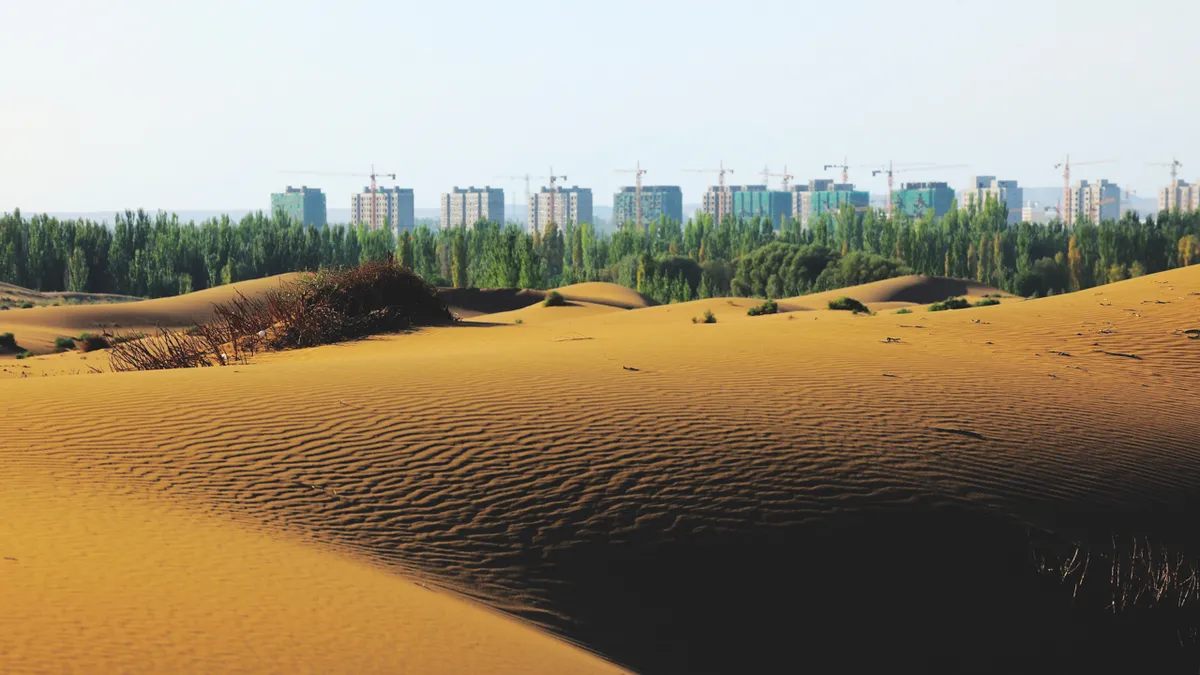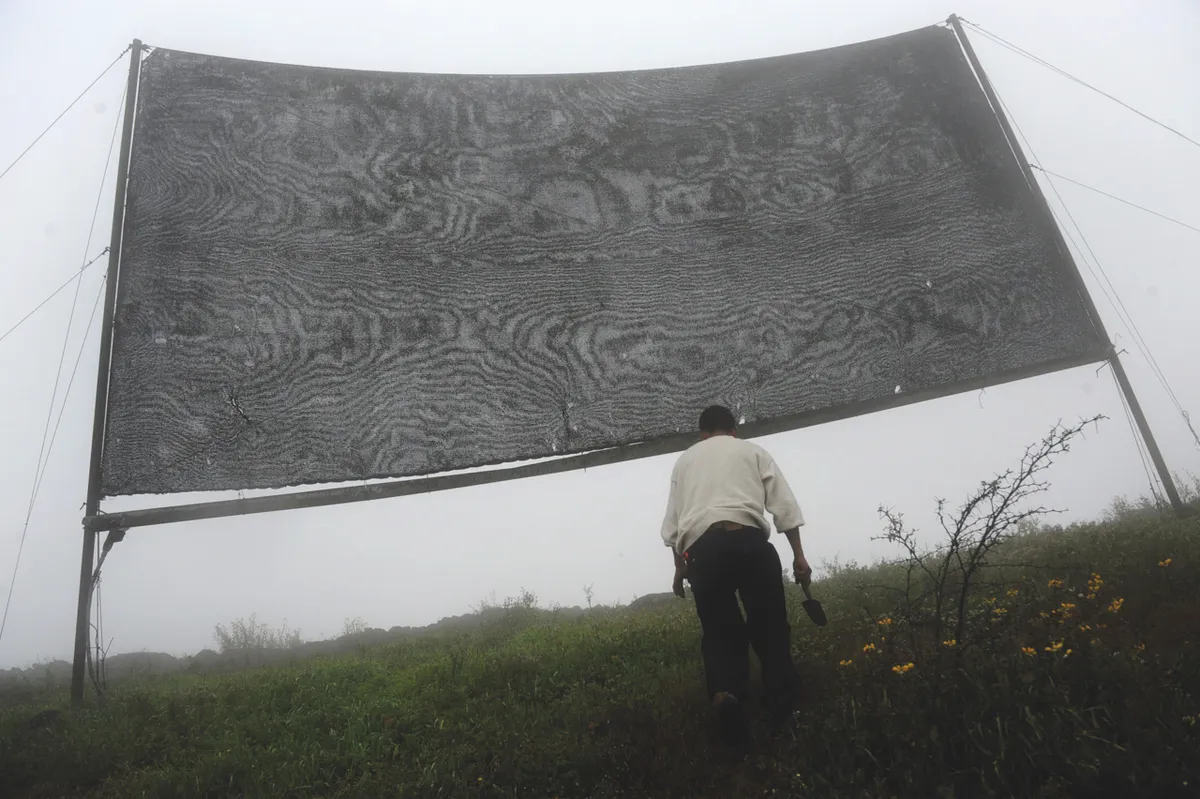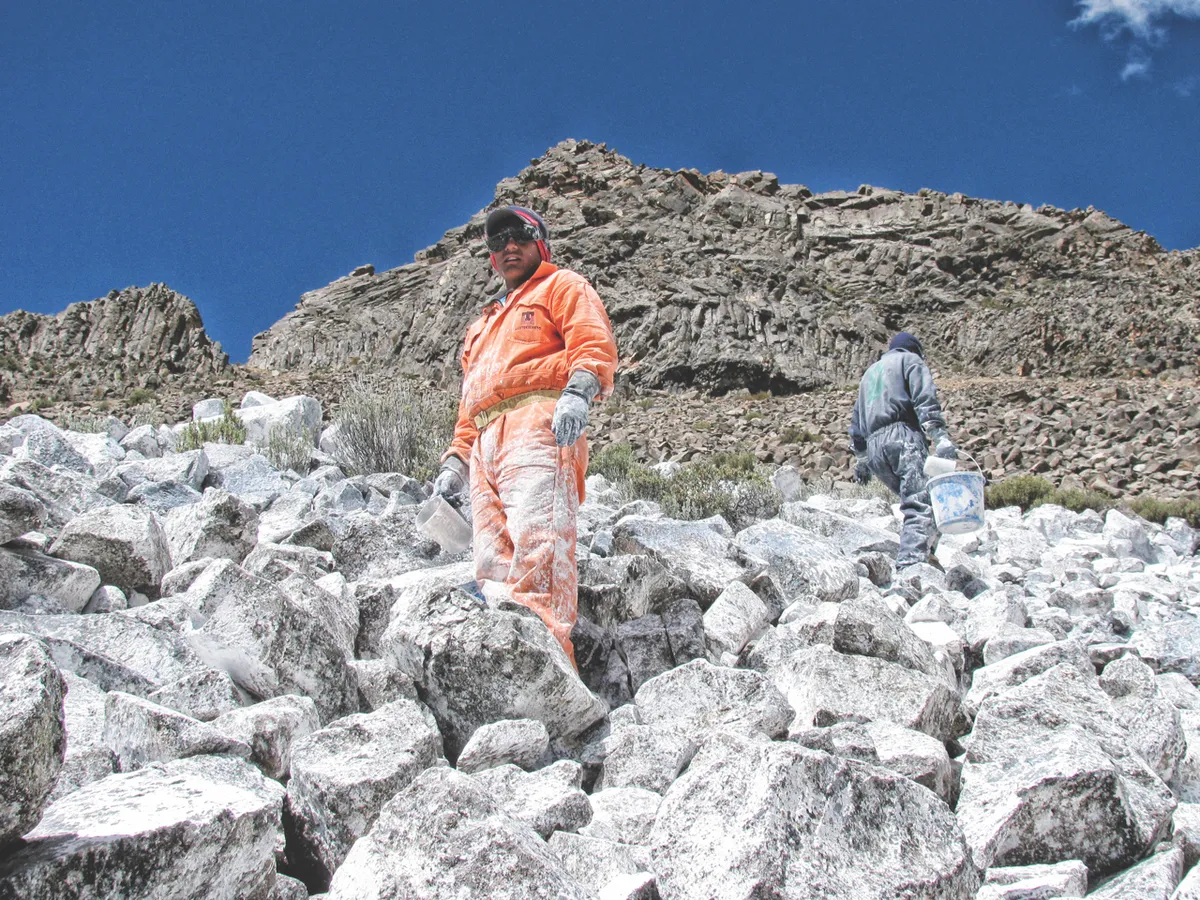After the Chernobyl nuclear disaster on 26 April 1986, the near 50,000 population of the city of Pripyat were evacuated, and to this day the 30km Chernobyl exclusion zone is still not safe for human inhabitants. Will we ever be able to move back in? We look at how humans are adapting to life in some of the most hazardous and inhospitable places on Earth:
Desert stopper

LOCATION: China
The Three-North Shelterbelt Program, aka the ‘Green Great Wall’, was launched in 1978 to halt the creeping advance of the Gobi Desert into northern China. Not to be confused with the Great Green Wall, a similar initiative planned for the Sahara, the project aims to plant a belt of trees that will block the path of wind and dust storms from the north and strengthen the soil with their roots, helping to prevent desertification.
At nearly 4,500km (2,800 miles) long, the belt should consist of roughly 100 billion trees by its scheduled completion date in 2050. But although 66 billion trees have already been planted, the project has faced – and continues to face – many challenges, including the loss of a billion poplar trees to disease in 2000, and continuing desertification caused by over-farming and poor use of land.
Disaster-proof homes

LOCATION: Philippines
In 2013, Typhoon Haiyan crashed into the Philippines, killing more than 6,000 people and causing 89.6 billion pesos (£1.3bn)
worth of damage. Now, US company Monolithic is helping to construct specially-designed dome houses that have a better chance of surviving future storms in the Philippines and elsewhere.
With a curved surface, the domes are able to withstand high winds (not to mention earthquakes) much better than flat roofs and walls can, as the self-supporting shape helps to distribute stress around the structure. Add to this an extremely strong reinforcing material made from basalt, and you have a virtually disaster-proof home.
In 2015, Monolithic launched a project to build 50 domes to house 200 families in Dapitan, a coastal town on the Philippine island of Mindanao, but construction work has been set back by in-country delays. Meanwhile, the company also supports similar, smaller-scale projects worldwide, from Indonesia to Haiti.
Erosion-proof farms

LOCATION: Australia
Bushfires burned thousands of hectares of land in South Australia at the end of 2015, destroying vegetation and leaving the remaining soil susceptible to wind erosion. But Brian Fischer, a sheep farmer near Adelaide, took to his tractor to stop the situation getting worse.
Over 10 days, he and his two sons put into action a method Brian’s father had used after droughts back in the 1940s: ploughing the land in spirals. “The theory is that whichever way the wind blows, it can’t get a start to erode the soil because it’s always blowing against the trenches,” explains Fischer.
Now a ridged mat of geometric patterns, the farmland’s 400 hectares help prevent dust storms from forming, protecting the precious few inches of topsoil that cover the infertile clay or limestone rock beneath.
Fog collectors

LOCATION: Worldwide
Even in the driest parts of the world, fog offers a source of clean water – provided it can be collected. Using a cheap commercial mesh designed for shading plants, scientists at FogQuest have created ‘fog collectors’ that can trap an average of five litres of water per square metre of mesh per day – or up to 30 litres in particularly wet and windy conditions.
“Fog droplets are really tiny, from one to 25 microns in diameter,” says Robert Schemenauer, an atmospheric scientist and co-founder of FogQuest. “The wind pushes them against the mesh, and then gravity pulls the big droplets down, moving the water through connected pipes to a cistern.”
Since 2000, FogQuest has helped to set up fog collection projects in arid environments all over the world, from the Atacama Desert in Chile to the Everest region in Nepal.
Rubbish island

LOCATION: Belize
Westpoint Island is one of several sandy islets in the shallow Caribbean waters around the island of Tobacco Caye, Belize. But unlike its neighbours, Westpoint is man-made – or at least its foundations are, having been constructed mostly from junk.
An 8,000 square metre speck on the map, Westpoint is the project of local fisherman Gerald McDougall, who began constructing the island back in 2006 after noticing how sand built up on rubbish thrown away by hotel resort workers.
The island’s base is made from layers of sorted rubbish, including plastic bags and burnt cans, interspersed with layers of mud, sand and sawdust that help to retain water and promote plant growth. Despite being battered by bad weather in recent years, the little island is still standing, and McDougall uses it as a base from which to sell his fish to local markets.
Man-made glaciers
LOCATION: Himalayas
Water is in short supply in the Himalayan desert during spring – a problem that the Ice Stupa Project, launched in 2014, aims to solve by growing glaciers from scratch.
The technology is surprisingly simple. “You put one end of a pipe upstream and take the other end of the pipe where you want water,” explains engineer and project founder Sonam Wangchuk. “Since water always maintains its level, if you have one end upstream, higher in altitude, then the water downstream will jet out in a fountain. In the cold air on the Tibetan plateau, this water freezes as it falls.”
Over time, ice builds up from the ground, creating conical towers that Wangchuk calls ‘stupas’ because of their resemblance to the Buddhist structures of the same name. Unlike real glaciers higher up in the mountains, which remain frozen until the summer, ice stupas melt in the spring, when the farmers need water for their crops.
The largest stupa stands 20m tall, holding around two million litres of water, but the majority of the dozen stupas currently being built are smaller mounds grown in stream beds to provide water for village communities.
Repainting mountains

LOCATION: The Andes
Light-coloured surfaces reflect heat better than dark ones do. This was the simple premise that inspired inventor Eduardo Gold to tackle glacial melting in the Andes in the mid-2000s.
In the hope of cooling the ground enough to encourage new glaciers to form, Gold and a few helpers began the Herculean task of painting a mountain white.
The team used eco-friendly paint made from lime, egg whites and water, and received international attention when the initiative was named one of the World Bank’s ‘100 ideas to save the planet’ in 2009. But the project suffered managerial setbacks and funding shortages, and Gold’s death in 2014 effectively brought work to a standstill.
A handful of other ideas have been tested since, including using liquid nitrogen to keep glaciers cool, but scientists are increasingly advising a different approach.
“Glaciers are retreating very fast,” says glaciologist César Portocarrero of the Peruvian Institute for Glaciology and High Mountain Ecosystems. “But it’s impossible to stop them retreating. It’s a global problem. What we have to do is work against the effects of glacial retreat.”
This article first appeared in issue 293 of BBC Focus magazine - subscribe here.